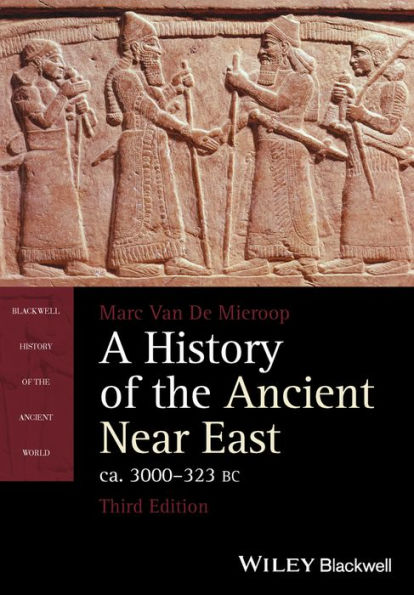Table of Contents
List of Illustrations viii
List of Charts xi
List of Maps xii
List of Debates xiv
List of Boxes xv
List of Documents xvi
Preface xviii
Author’s Note xxi
1 Introductory Concerns 1
1.1 What Is the Ancient Near East? 1
1.2 The Sources 3
1.3 Geography 6
1.4 Prehistoric Developments 10
Part I City-States 19
2 Origins: The Uruk Phenomenon 21
2.1 The Origins of Cities 23
2.2 The Development of Writing and Administration 30
2.3 The “Uruk Expansion” 37
2.4 Uruk’s Aftermath 41
3 Competing City-States: The Early Dynastic Period 44
3.1 The Written Sources and Their Historical Uses 45
3.2 Political Developments in Southern Mesopotamia 48
3.3 The Wider Near East 56
3.4 Early Dynastic Society 60
3.5 Scribal Culture 63
4 Political Centralization in the Late Third Millennium 67
4.1 The Kings of Akkad 68
4.2 The Third Dynasty of Ur 79
5 The Near East in the Early Second Millennium 90
5.1 Nomads and Sedentary People 92
5.2 Babylonia 95
5.3 Assyria and the East 100
5.4 Mari and the West 107
6 The Growth of Territorial States in the Early Second Millennium 113
6.1 Shamshi-Adad and the Kingdom of Upper Mesopotamia 115
6.2 Hammurabi’s Babylon 118
6.3 The Old Hittite Kingdom 127
6.4 The “Dark Age” 131
Part II Territorial States 135
7 The Club of the Great Powers 137
7.1 The Political System 138
7.2 Political Interactions: Diplomacy and Trade 142
7.3 Regional Competition: Warfare 151
7.4 Shared Ideologies and Social Organizations 153
8 The Western States of the Late Second Millennium 159
8.1 Mittani 160
8.2 The Hittite New Kingdom 165
8.3 Syria-Palestine 174
9 Kassites, Assyrians, and Elamites 182
9.1 Babylonia 183
9.2 Assyria 190
9.3 The Middle Elamite Kingdom 195
10 The Collapse of the Regional System and Its Aftermath 202
10.1 The Events 203
10.2 Interpretation 210
10.3 The Aftermath 213
Part III Empires 221
11 The Near East at the Start of the First Millennium 223
11.1 The Eastern States 224
11.2 The West 232
12 The Rise of Assyria 246
12.1 Patterns of Assyrian Imperialism 247
12.2 The Historical Record 253
12.3 Ninth-Century Expansion 255
12.4 Internal Assyrian Decline 261
13 Assyria’s World Domination 265
13.1 The Creation of an Imperial Structure 266
13.2 The Defeat of the Great Rivals 270
13.3 The Administration and Ideology of the Empire 277
13.4 Assyrian Culture 279
13.5 Assyria’s Fall 284
14 The Medes and Babylonians 289
14.1 The Medes and the Anatolian States 290
14.2 The Neo-Babylonian Dynasty 294
15 The Creation of a World Empire: Persia 308
15.1 The Sources and Their Challenges 309
15.2 The Rise of Persia and Its Expansion 310
15.3 Governance of the Subject States 315
15.4 The Creation of an Imperial Structure 319
16 Governing a World Empire: Persia 327
16.1 Political Developments 327
16.2 Administration of the Empire 331
16.3 Local Forms of Persian Administration 335
16.4 The End of the Empire 342
Epilogue 346
King Lists 348
Guide to Further Reading 364
Bibliography 370
Comprehensive Time Line 385
Index 389






